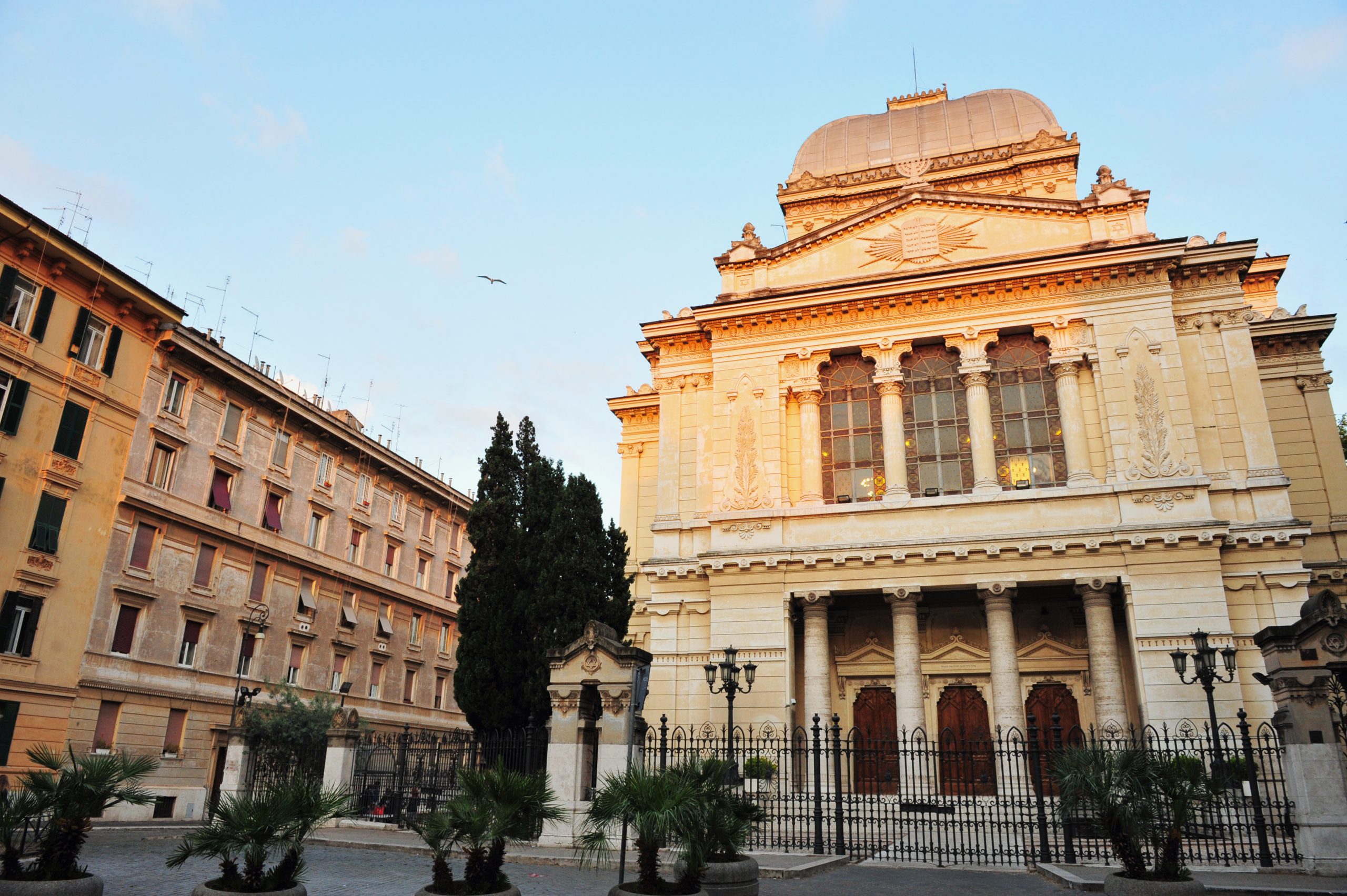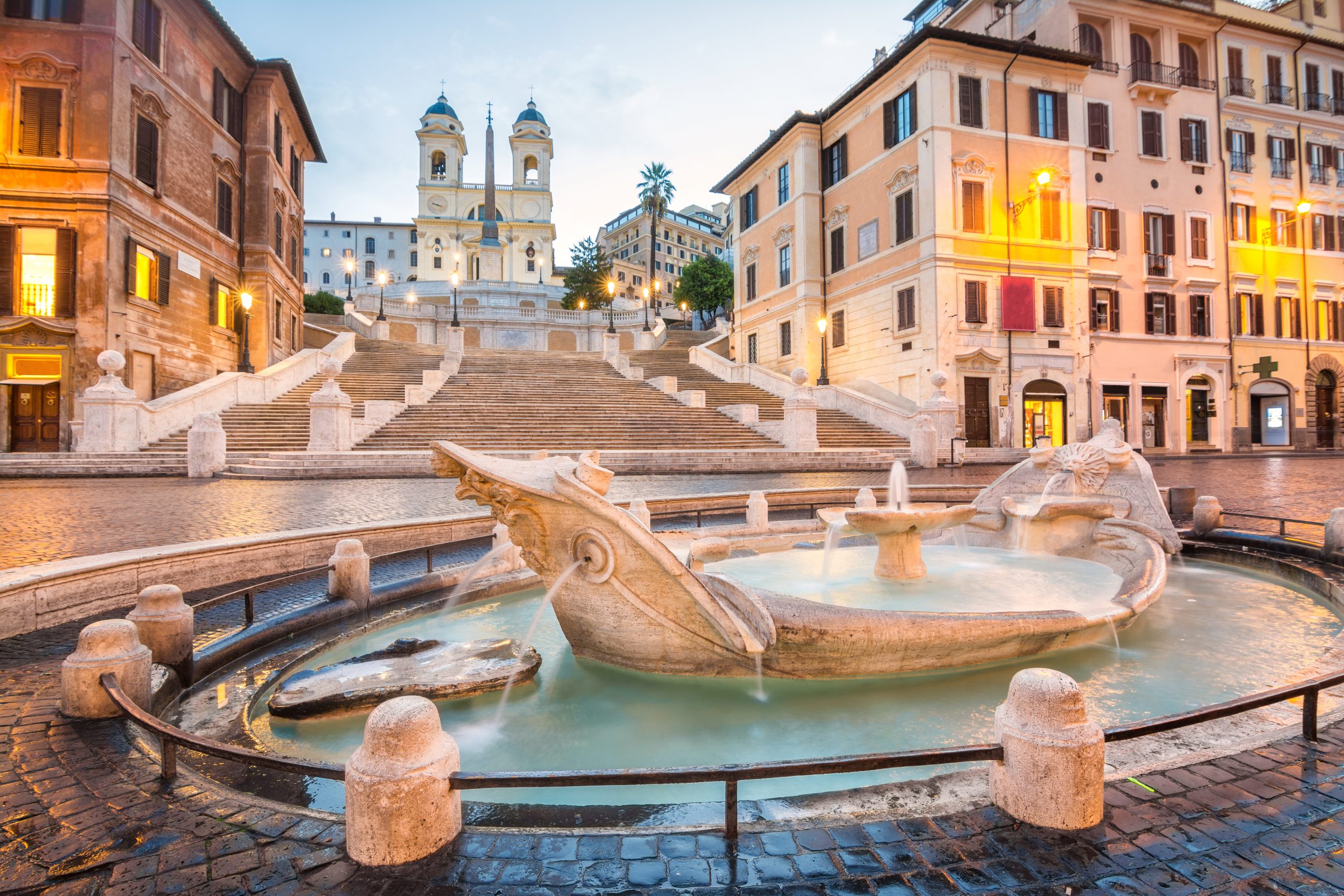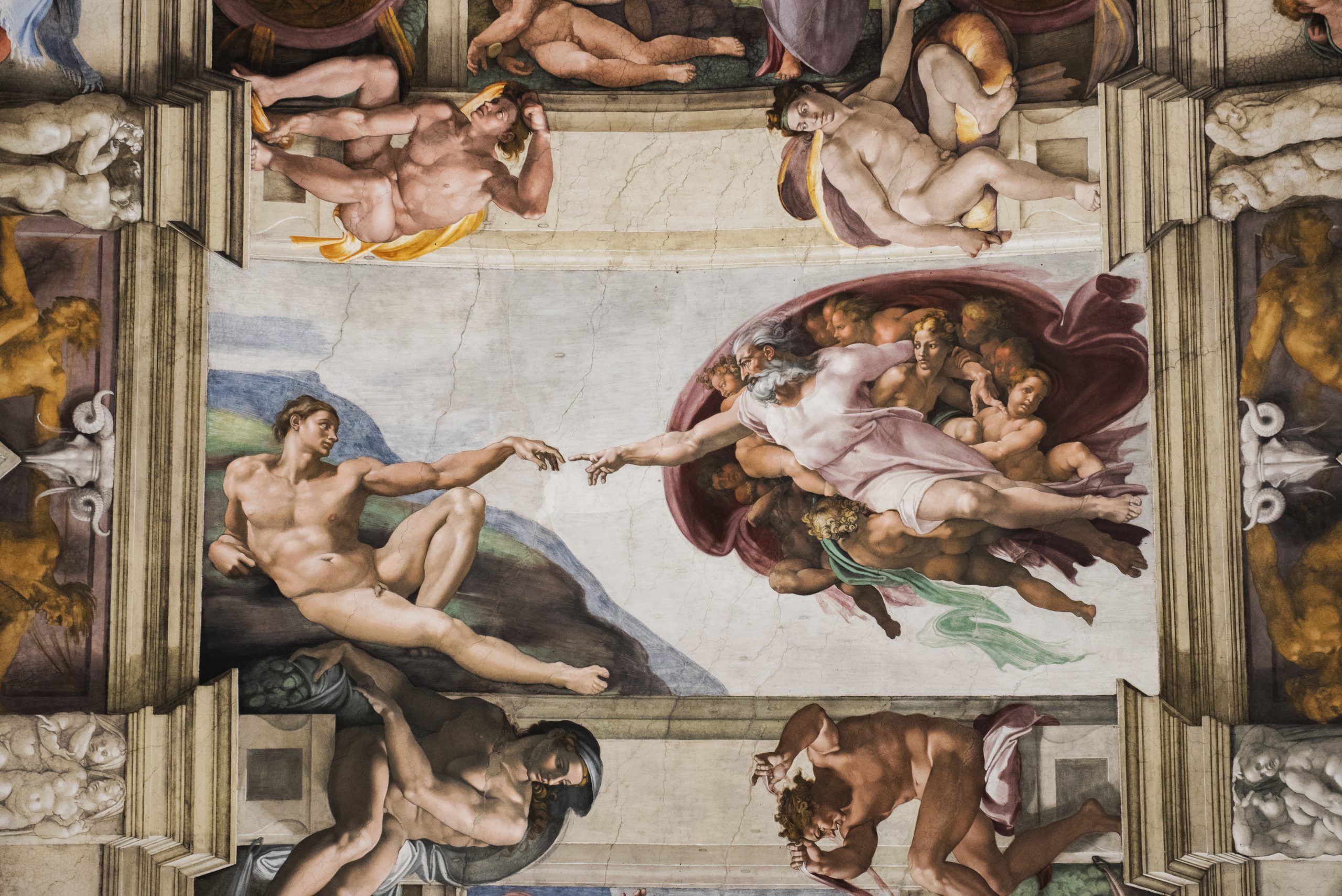KATAKOMBEN _ VIA APPIA
The catacombs are labyrinths of ancient burials stretching for miles under the modern city that were used by Rome’s early Christians for over two hundred years. A visit to the catacombs takes visitors back to a changing Roman empire and to the beginning of Christianity when these underground labyrinths were used to bury and store the dead. The catacombs are particularly important to the history of Christian art, some of the burial spaces are richly decorated with the first images of old and new testament themes. From a historical perspective visiting the catacombs is a fascinating experience; exploring these tunnels highlights how difficult it must have been to dispose of the dead.
To visit the catacombs, you have to go slightly out of the centre of the city as they are all located outside the ancient city walls. According to the oldest religious laws of the city, the dead had to be laid to rest outside of the sacred boundary or pomerium which was marked by the city walls, this was the Necropolis (city of the dead). Pagan Romans traditionally cremated their dead and placed the ashes in urns which were put in columbaria, wealthier Romans had over ground grave monuments, some were grand mausoleums. These, like the catacombs later, were all located outside the ancient city walls, dotted around and alongside the main roads that left the city; a walk along the Appia Antica reveals grave stones and monuments from long dead Romans wanting to be remembered by passers-by.
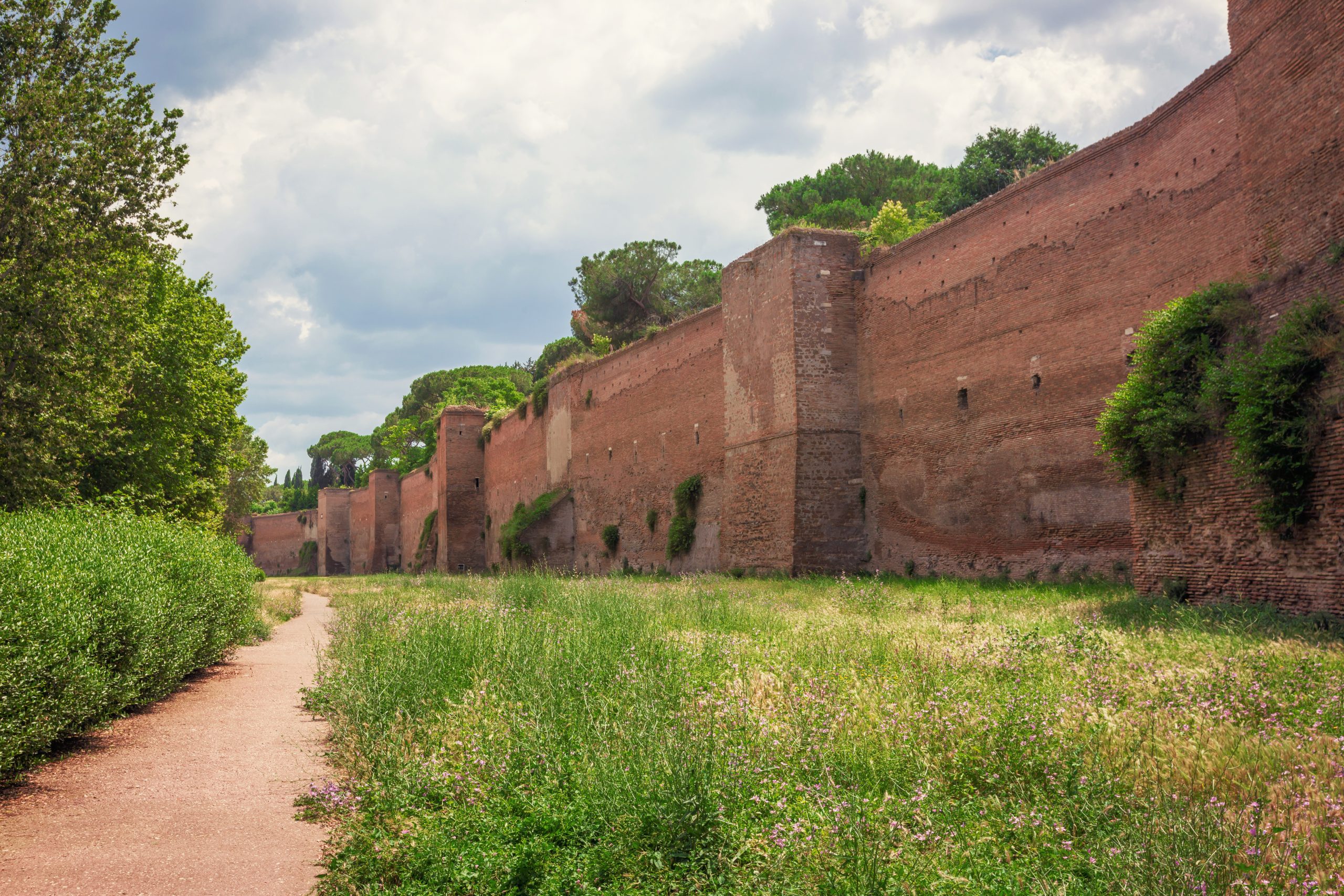
With Christianity, practices changed, this new religion demanded the body was kept whole which created a need for space. The urban poor did not own land; the bodies of early Christians, pagans and Jews were no doubt mixed together initially, but by the 2nd century AD wealthy Romans gave their land outside of the city walls for the burial of the dead. Some of the catacombs in Rome bear the names of these wealthy landowners, like Domitilla and Priscilla.
Catacomb literally means ‘by the hollow’, many catacombs started life as quarries and the underground caves and tunnels were used for burials later on. Unlike the catacombs in Paris, the Roman catacombs are not constructed out of brick but are dug out of the bedrock of Rome called Tufa. Tunnels and burial niches were cut out of the soft bedrock which hardened over time allowing the burial of bodies. The dead were wrapped in simple cloth or linen, placed into horizontal niches, covered and sealed with either simple terracotta slabs, roof tiles, or marble plaques. Some of the wealthier burial spaces were plastered and decorated with frescoes. These underground passageways were utilized up until the 5th century, when invading barbarians camped outside the walls made it difficult to leave the city to bury the dead.
Although legends and urban myths abound, these were burial spaces and never used to escape persecution – all becomes clear on a visit to one of these fascinating complexes.
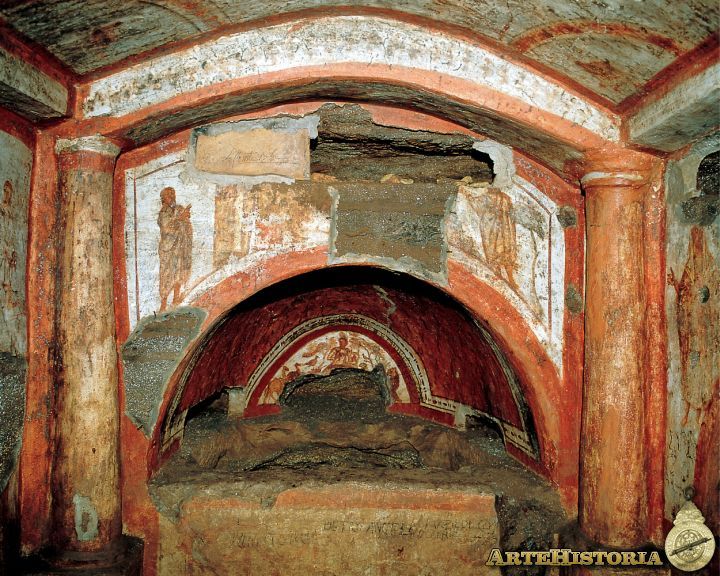
Although archaeologists have found more than sixty catacombs complexes, including five Jewish ones, very few of them are open to the public. The most visited are those found out by the Appia Antica; San Sebastiano, San Callisto and San Domitilla.
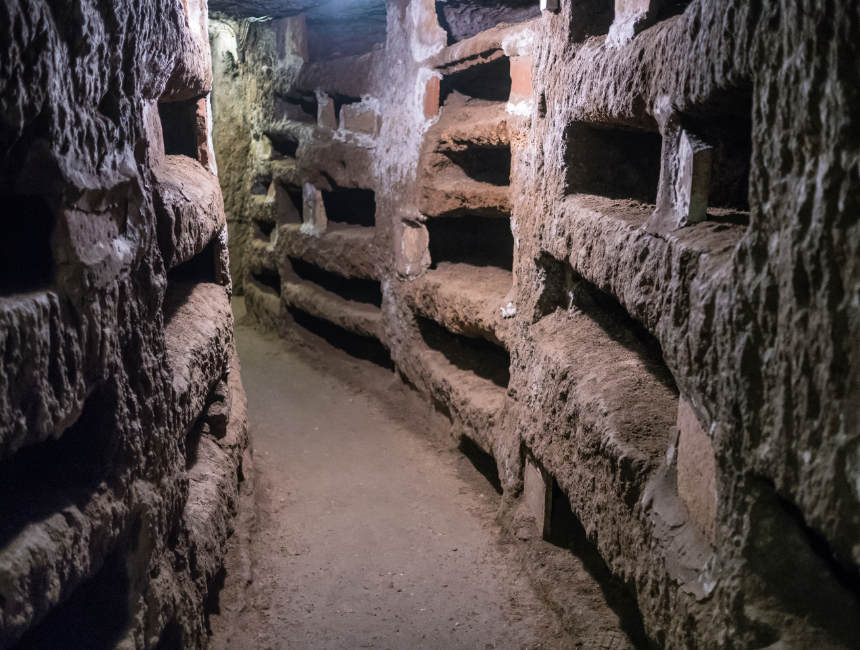
APPIA ANTICA
The Appia Antica or Appian Way is the first Roman highway that stretches from the Roman Forum down the entire length of the boot of Italy to Brindisi in the heel, a distance of 400 miles. This first road named after the Roman censor Appius Claudius Caecus, who built it in 312 BC was designed for military purposes during the Samnite Wars against a tribe to the south of Rome. In 71 BC after Spartacus’ revolt over 6,000 slaves who had fought in the rebellion were crucified along the Appia between Capua and Rome. The roads were built by the military; as they moved out from Roman territory the soldiers laid roads as they went which enabled them to transport supplies, troops and messages quickly.
Roman roads are no mere paving but were constructed with precision engineering. Trenches were dug down as deep as ten meters and filled with layers of sand, gravel and larger stones and then paved over with large basalt blocks that fit together much like a jigsaw. They were built to resist rain, freezing and flooding and were constructed to need as little repair as possible.
Labelled the ‘Queen of Roads’ in antiquity, the via Appia initially connected Rome with Capua (near Naples) and would eventually run to the important port of Brindisi where Roman ships sailed to Egypt and Greece. It is the vast network of roads stretching from Italy that enabled the Romans to conquer and manage a vast empire.
We have all heard the expression ‘All Roads lead to Rome’, well indeed they do, it was the emperor Augustus who declared this in 20 BC when he set up the miliarium aureum (golden milestone) near the
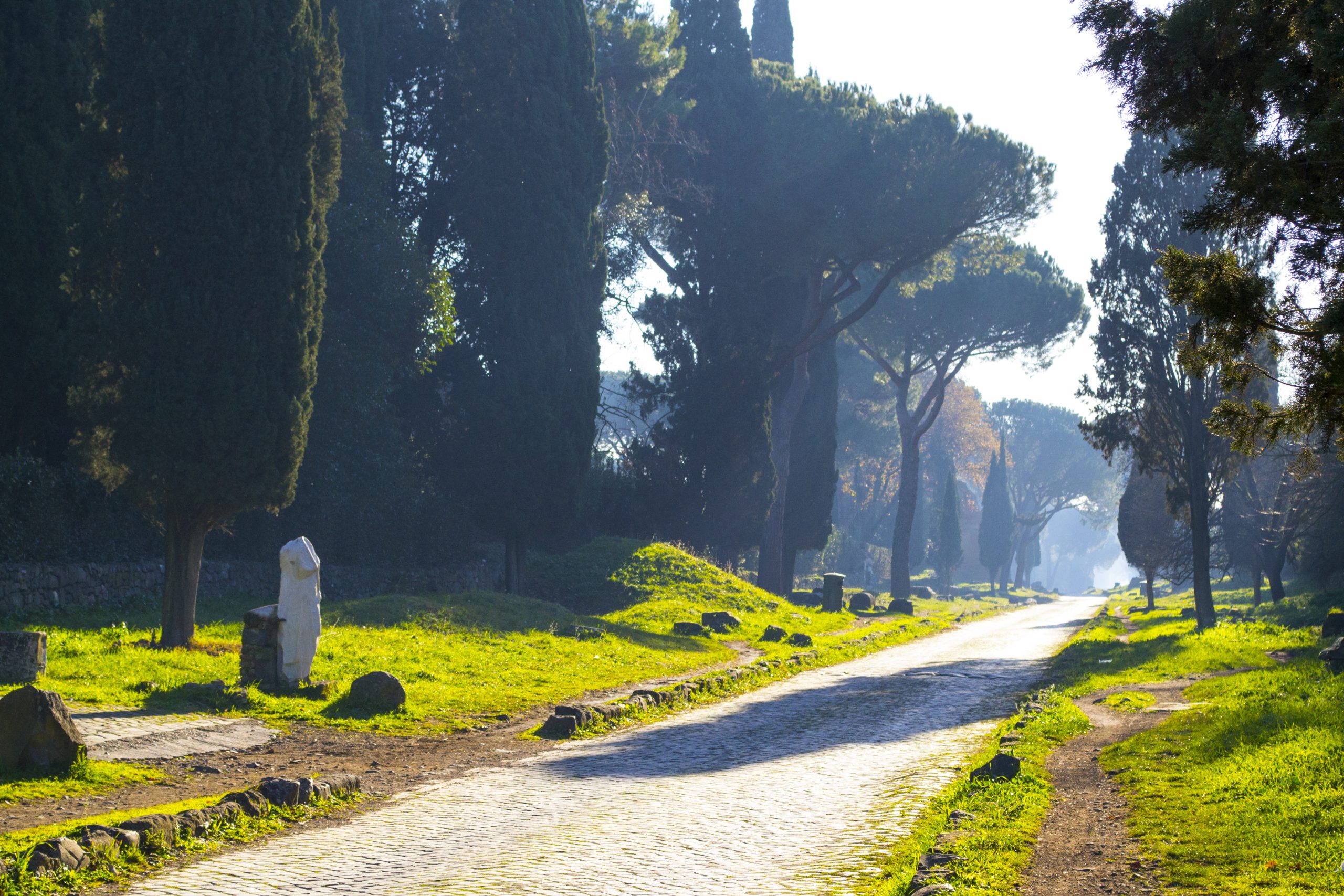
Temple of Saturn in the Roman Forum this gilded bronze column measured the distances of Rome’s roads.
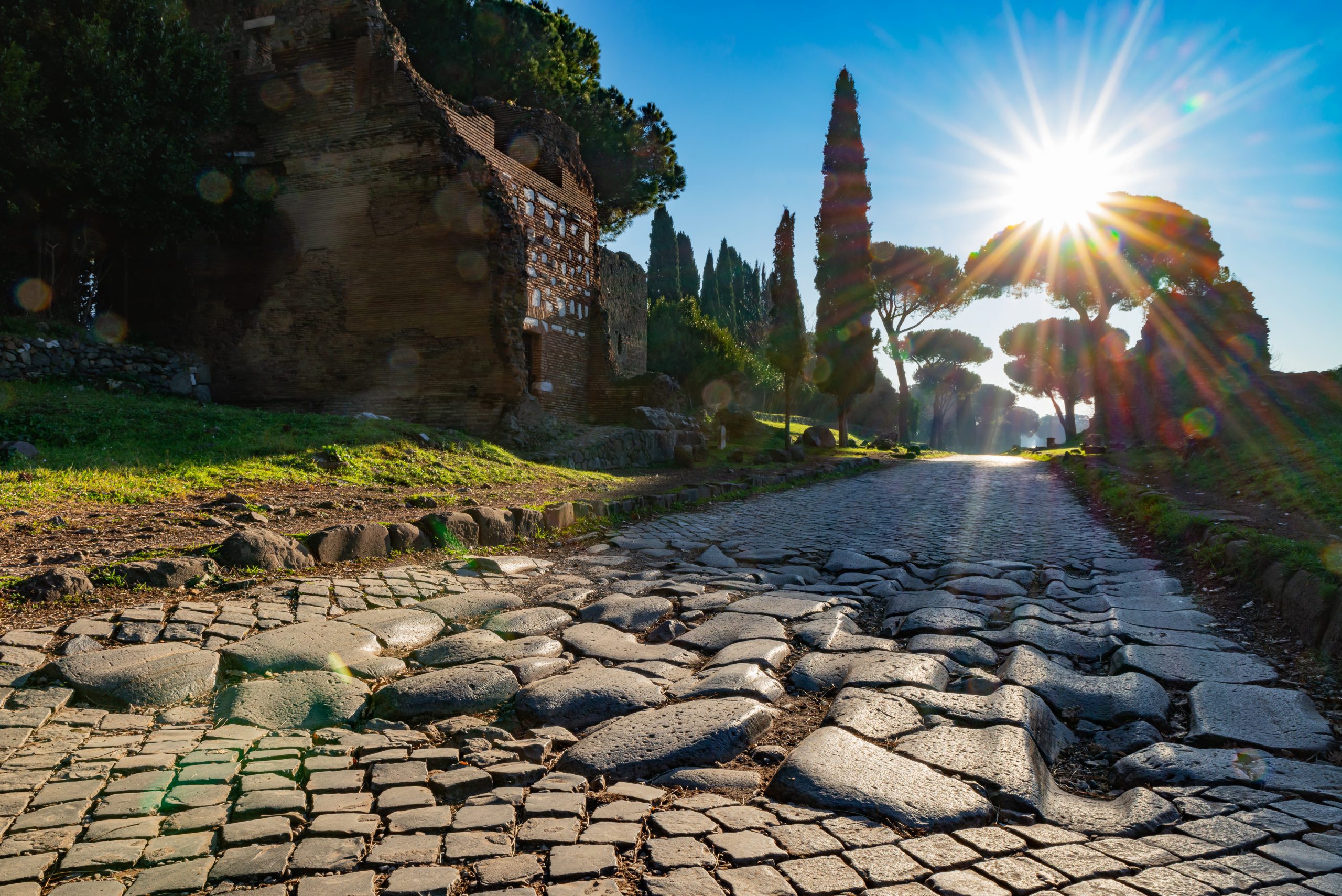
Today the stretch of the Appia Antica close to Rome is in the Appia Antica regional Park – a large belt of protected greenery, with archaeological remains and tombs dotted along the ancient cobbled road with Aqueducts stretching out from Rome. Visitors can walk on the Appian way or hire bikes and visit the monuments along the road, walking in the footsteps of the ancients.
